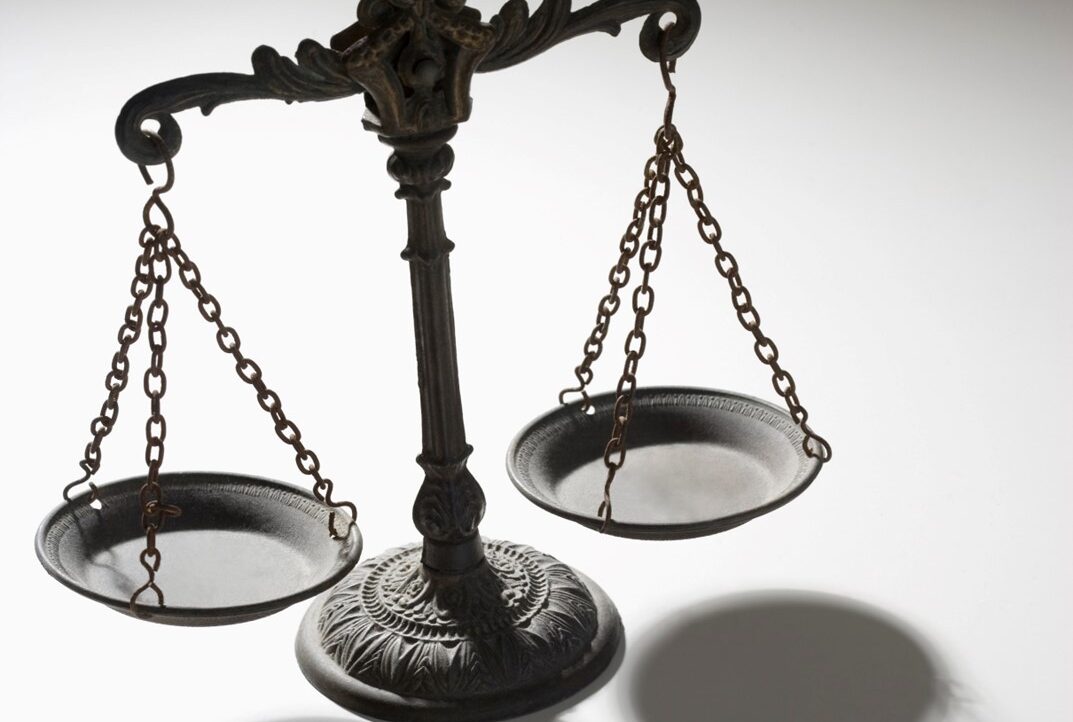Alerts & Updates 23rd May 2022




India – UAE Comprehensive Economic Partnership Agreements: Public Notice No. 06/2015-2020 dated May 1, 2022
On 18 February 2022, India and the United Arab Emirates (UAE) signed the India-United Arab Emirates Comprehensive Economic Partnership Agreement (“CEPA”), which came into force on 1 May 2022.[1] The commitments made under the CEPA were ratified vide Customs Notification No. 22/2022-customs dated 30 April 2022[2] (Notification).
While most tariff lines were subject to the reduced/eliminated tariffs, tariff reductions for certain tariff line items are subjected to Tariff Rate Quota (“TRQ”). Table III of the Notification provides the list, which includes goods of plastic (Chapter 39), gold (Chapter 71), and copper (Chapter 74). The provisions on tariff reduction subject to TRQs included as part of the CEPA are the first in various trade agreements signed by India. The tariff reductions subject to TRQ appear to have been included in the CEPA at India’s insistence to check on a sudden and sharp rise in imports from the UAE.
The TRQ is a mechanism that allows a set quantity of specific products to be imported annually. These specific products can be imported at lower import duty rates (in-quota duty) than the import duty rate normally applicable to such products. Unlike a simple quota system, a TRQ regime does not restrict the quantity of imported products. For example, India has set a TRQ limit on imports of Low-density Polyethylene (LDPE) 50,000 MT per annum at a concessional tariff rate of 0% (from the most favoured nation’s tariff rate of 7.5%) under a customs notification. The importers in India may import the LDPE into India at a concessional rate of 0% only up to 50,000 MT annually subject to applicable procedures. However, any imports of LDPE above the quantity of 50,000 MT would be subject to a tariff rate of 7.5%.
A corresponding Public Notice No. 06/2015-2020 dated 1 May 2022 (Public Notice) has been issued to make suitable changes to the Handbook of Procedure (HBP) and Appendix 2A. Changes in Appendix 2A have been enclosed as Annex-1.
The products notified under the Public Notice (i.e., products of plastics, gold, and copper) constitute a significant proportion of India’s imports from the UAE. In the Financial Year 2021-22, these tariff lines constituted about 18% of the total value of imports from the UAE.
| S Code | Commodity | 2020-2021 | 2021-2022(A) | YoY Growth (%) |
| 3901 | Polymers of Ethylene in Primary Forms | 486 | 738 | 52% |
| 3902 | Polymers Of Propylene or of other Olefins, in Primary Forms | 203 | 326 | 60% |
| 3904 | Polymers of Vinyl Chloride or of Other Halogenated Olefins, In Primary Forms | 75 | 74 | -1% |
| 7108 | Gold (Incl Gold Plated With Platinum) Unwrought or in Semi manufactured Forms/In Powder Form | 4,195 | 6,202 | 48% |
| 7113 | Articles Of Jewellery And Parts thereof; Of Precious Metals, of Mtl Clad With Precious Metal | 55 | 167 | 204% |
| 7408 | Copper Wire | 246 | 289 | 18% |
| Total imports from UAE | 26,623 | 43,865 | 65% |
Source: trade statistics available at commerce.gov.in
It is interesting to note that the imports of articles covered under the provisions for TRQ have increased substantially in FY 2020-21 compared to the previous experience of India on FTA, especially under the existing FTA’s such as ASEAN FTA, Japan FTA, and Korea FTA. Under these FTAs, the imports into India have increased substantially compared to exports from India[3]. Therefore, the Indian government has brought in TRQ measures under the CEPA to ensure that imports do not increase substantially, injuring the domestic industry.
This update provides a high-level summary of the provisions introduced vide the Public Notice and its implication for the relevant industries.
The public notice specifies different Quotas and tariff eliminations for the different products. This update encapsulates the industry-specific changes pursuant to the Public Notice.
A. Plastic Products
Plastic products and articles thereof, such as LLDPE, LDPE, Polyethylene, Polypropylene, PVC, etc., are subject to TRQs. The Public Notice provides a 50% tariff reduction for plastic products classifiable under Certain Tariff Items that will be phased over 5 years. Further, these tariff reductions will be subjected to the TRQ limits, and there are two types of TRQ for these items-
The Public Notice specifies the quantities for various line items that can be imported at the reduced tariffs. Such quantities are provided (either separately for an individual tariff line item or cumulatively for multiple tariff line items). Once the import quantities specified under the Public Notice are achieved, any subsequent imports during the year would be subject to the effective tariff rate mentioned in the Public Notice.
To Apply for a TRQ license for items of Chapter 39, the applicant will have to prove that he has been an importer of the specified item for the last two years. Such importers must be the users/processor of the articles imported into the country. The applicant will have to furnish a self-certified copy of the document issued by Central/State/District Authorities indicating processing capacity to prove the same. The Directorate General of Foreign Trade will govern the issuance of the licenses. The Public Notice does not specify the manner in which the licenses will be issued to the applicants. It remains to be seen whether the DGFT issues licenses to the applicants on the basis of on first come basis or devise any procedure/methodology to allocate the permissible quantities to various applicants. Any methodology to process the licensing by DGFT will have its challenges for any importer to avail of the benefit under this scheme.
B. Gold Industry
There are two types of tariff reduction for the articles of gold –
The applicants applying for a TRQ license for the articles of gold of Heading 7108 will have to comply with the additional conditions, which are as under-
a. A applicant should be a jewellery manufacturer and should be engaged in the business of goods falling under Heading 7108, 7113, 7114, and 7118.
b. The average annual turnover of the applicant for the last 3 financial years should be Rs. 25 crores.
c. The turnover should comprise either –
i. 90% of items manufactured or sold under Heading 7113[6], or
ii. The quantity of items manufactured or sold under Heading 7113 should be at least equal to the TRQ quantity bid by the applicant.
d. The applicant should have a GST number, and GST returns up to the applicable preceding GST return filing period.
e. Financial statements should be audited/ certified by the Chartered Accountant on the basis of the jeweller’s GST declarations.
f. Import of Gold Dore under TRQ shall not be considered.
g. These TRQs may be affected through Nominated Agencies as notified by RBI (in the case of banks), nominated agencies notified by DGFT, or Qualified Jewellers as notified by International Financial Services Centres Authority (IFSCA).
h. At the time of import, the applicant will have to comply with the Customs (Import of Goods at Concessional Rate of Duty) Rules, 2017.
C. Copper Industry
For copper items, the Public Notice provides for complete tariff elimination, which is phased over five years, and the same will be subjected to increasing TRQ limits for the initial five years thereafter, TRQ will be calculated based on moving average volume. However, it is unclear whether the moving average will be determined on the basis of actual imports or specified quantities of TRQ in the preceding years.
For items covered under Tariff Item No. 74081110 and 74081190, TRQs for the first five years have been specified as 85KT[7], 95KT, 105KT, 115KT, and 125KT thousand metric tonnes, and for the remaining years, it is an average of 3 years that are preceding before the last year. So, for the 6th year, the TRQ (on the basis of specified TRQ quantities for the preceding year) will be the average of TRQs of Years 2 to 4, i.e. 105KT
Similarly, for items covered under Tariff Item No. 74081910, 74081290, and 74081990, TRQs for the first five years have been specified as 270 MT, 302.5 MT, 335 MT, 367.5 MT, and 400 MT, and for the remaining years, it is an average of 3 years that are preceding before the last year. So, for the 6th year, the TRQ (on the basis of specified TRQ quantities for the preceding year) will be the average of TRQs of Years 2 to 4, i.e. 335 MT.
The applicants will have to file the TRQ application online through the Directorate General of Foreign Trade (“DGFT”) website (https://dgft.gov.in) under the import management system.
For filing the applicant, the applicant will need to first ensure that the following requirements have been fulfilled[8]–
The Notification and the Public Notice provide for certain general conditions[9] that need to be complied with for taking benefit of these concessional rates. These conditions are-
a. The importer needs to submit a Certificate of Origin issued by concerned authorities in UAE at the time of clearance of the import consignment.
b. TRQ limit for the concerned items will be proportioned periodically, except for the article of gold classifiable under Heading 7108, for which allocation will be proportioned on a quarterly basis.
c. Applications for the Financial Year 2022-23 will be open from 5 May 2022 to 18 May 2022. It will also include applications for the first two-quarters of articles of Heading 7108 i.e., till 30 September 2022. Subsequently, the third Quarter applications will be invited from 1 August 2022 to 31 August 2022, and the fourth Quarter applications will be invited from 1 November 2022 to 30 November 2022.
d. TRQ will be allotted by the DGFT in accordance with the relevant procedure as specified in the HBP.
e. These TRQ licenses will be valid for the specific allocation period or specific quarter, as applicable, and the same cannot be carried forward from one period to another.
f. To be eligible for a TRQs license the applicants must be processors or manufacturers who will consume the concerned items, except for items of Heading 7108. The same can be proved through GST returns or Udyam Registration or IEM registration.
With respect to the gold industry, the TRQ for items of Heading 7108 seems to be of limited effect in light of the fact that the total quantum of gold imported from UAE in the year 2021 was about 120.16 tonnes; thus, the preferential benefit is likely to be available for all imports.[10] While India imports the majority of its gold requirements, the government has brought in TRQs measures for items of Heading 7108 to ensure that the imports of gold, including under the heading 7108, are not increased significantly.
In addition, the tariff concession provided by India on gold items is likely to reduce the cost of raw materials for making jewelry. This will promote the export of plain gold and gold-studded jewelry, which is expected to increase to USD 10 billion in 2023.[11]
Given that plastics were one of the major imports of India from UAE in the year 2020[12] and that there has been substantial growth in the import of items of Headings 3901 and 3902, the Indian government seems to have imposed TRQs as a prudent measure to prevent an uncontrolled surge in the imports of these items. Further, even though there has not been a significant increase in the import of copper items, these TRQs will act as protective measures to prevent future contingencies.
Previous FTAs signed by India, especially the existing FTAs such as ASEAN FTA, Japan FTA, and Korea FTA, have not been favorable in terms of imports into India have vis-à-vis exports from India. The imports from FTA nations increased significantly compared to exports from India to FTA partner nations. Further, under the FTAs signed by India with partner nations, there is no mechanism to safeguard the domestic industry from any sudden rise in imports from such FTA partners other than bilateral safeguards (as per provisions of relevant FTAs) or imposition of trade remedial duties (such as anti-dumping and countervailing duties). The threshold for the domestic industry for seeking protection under bilateral safeguards or trade remedies duties is very high, thereby, it may not result in achieving the desired results as well as a time-effective method from the domestic industry perspective. Therefore, the Indian Government seems to have insisted UAE incorporate the mechanism under the CEPA to check and contain any sudden rise in imports due to tariff concessions. This move has served dual purposes for the Indian industry i.e. protecting the interests of domestic producers of such articles while at the same time ensuring the availability of materials to the consuming industry at competitive prices.
Overall, these TRQs provide the optimal solution for ensuring sufficient availability of inputs at a lesser price without causing any potential risk to the domestic industry.
[1] List of documents launched/signed during the India-UAE Virtual Summit, 18 February 2022, available at: https://www.mea.gov.in/bilateral-documents.htm?dtl/34880/List_of_documents_launchedsigned_during_the_IndiaUAE_Virtual_Summit
[2] Notification No. 22/2022-Customs dated 30.04.2022, available at: https://egazette.nic.in/WriteReadData/2022/235481.pdf
[3] A Note on Free Trade Agreements and Their Costs, NITI Aayog, available at: https://www.niti.gov.in/writereaddata/files/document_publication/FTA-NITI-FINAL.pdf
[4] Tariff item No. 71081100, 71081200, and 71081300.
[5] Tariff Item No. 71131910, 71131920, 71131930, and 71131940.
[6] Heading 7113 states – articles of jewellery and parts thereof, of precious metal or of metal clad with precious metal
[7] “KT” means “Killo Tonnes”, i.e., 1000 metric tonnes (MT)
[8] Tariff Rate Quota (TRQ) Module, DGFT FAQs, available at: DGFT FAQs
[9] See. Page 11 and 12 of the Public Notice
[10] What India-UAE trade pact provisions say on gold, Deccan Herald, available at: https://www.deccanherald.com/opinion/panorama/what-india-uae-trade-pact-provisions-say-on-gold-1103578.html
[11] Trade pact with UAE may benefit $26 bn worth of Indian goods: Official, The Business Standard, available at: https://www.business-standard.com/article/economy-policy/trade-pact-with-uae-may-benefit-26-bn-worth-of-indian-goods-official-122022000349_1.html
[12] United Arab Emirates Exports to India, Trading Economics, available at: https://tradingeconomics.com/united-arab-emirates/exports/indi